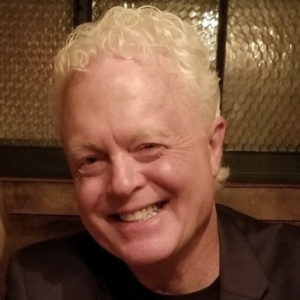A life in the day of…
Occasionally when we in long-term care attend a conference, there will be a speaker who delights us. We laugh or are moved to tears. We feel rejuvenated, and we wish that our colleagues could share this experience. This is the kind of conference speaker I wanted to be. I wanted to take my own experiences from the stage, including music, comedy, theater, storytelling, and fun; blend them with my practical workplace experiences in military emergency rooms, medical and surgical wards, elementary and high school classrooms, theaters, care facilities for people with disabilities, nursing homes, and administration offices; and weave through it all a comprehensive, honest program that would benefit people in their workplaces. So my wife Susan and I developed our program to be relevant to all of these human service environments.
Our primary goal is to help people focus on human needs by being kind to each other at work—while recharging their batteries with genuine and therapeutic fun. We've concluded that all services are human services, and it didn't take long for our message to be welcomed into factories, offices, banks, and many other businesses. But it is definitely in the nursing home setting that we do our most rewarding work, and we've been in a lot of them across the country over the past two years.
Our day in the life of a nursing home goes something like this: We walk through the front door at 6:45 a.m. and begin setting up our equipment, including an electric piano, a couple of speakers, and some props. Often a separate room is not available for a staff seminar, so we find ourselves in a dining room doing sound checks and playing old standards during breakfast. The residents quickly respond to familiar piano and harmonica music. Some actually dance in their seats to a Louis Prima swing number, a Hank Williams country classic, or the blues. We spark giggling and belly laughs in response to some clowning we do. When the residents learn that we came primarily to conduct two staff seminars, there's some disappointment, but they get excited again when we promise them an after-lunch show of music, sing-alongs, and goofiness.
The first session's staff audience, including everyone from frontline workers to supervisors, begins arriving about 10 minutes before the scheduled start. Staff—often a little grumpy—come in spurts, reluctantly, to yet another meeting. They're not sure what to expect. We overhear some people muttering, “Some sort of training. I'm too busy for this.” After they get seated, the same program that their administrator, DON, or HR manager saw at a state or national conference unfolds. The staff members' initial reluctance and skepticism fade and they engage—they laugh hard. They join in a few participation games. They recognize the negative effects of often-displayed workplace behaviors such as impatience with disruption, frustration with impossible to-do lists, and the draining of enthusiasm caused by snappiness, phoniness, and aloofness. These attitudes are all humorously, but realistically, discussed. Staff members begin to understand how they can control their own attitudes at work, where they spend most of their waking hours. They get it. They love it and say it's the best program their facility has ever had. They are recharged, and so are we.
Later in the afternoon we'll do another in-service for the other shifts, but now it's time for the after-lunch showcase. For the residents, we sing “By the Light of the Silvery Moon,” and we hear a North Dakota prairie woman's story of dancing with her husband to that song at the barn party where they first met. The foodservice workers watch as they work, the maintenance workers watch, and the aides, nurses, therapists, and receptionists all peek in to watch the show. They see the excitement, animation, and pure pleasure created by someone having fun at his or her job.
It's catching—I will never forget the thin, black man in a Cleveland nursing home who was wheeled up beside me at the piano. In 1919, he came to Cleveland when he was 14 years old to play trombone in “The Negro Band.” Now, at 101 years old, he sang different harmonies to every song I played. His milky eyes sparkled. We laughed and sang together and I felt so privileged to be with him. And everyone watched and shared. There were quite a few wet eyes, including my own.
The afternoon's staff audience is usually twice as large as the morning session. Word has spread and the program is even more energetic because of the size of the audience. As we prepare to leave at the end of the day, we are hugged by our many new friends. Our life in the day of a nursing home really is the best job in the world.
Frank Pastizzo has been a speaker and performer throughout his career. Since 2003, his Warm Up the Workplace program has been featured at state and national conferences in the healthcare and other human services fields. In the past three years he has been invited to perform for more than 250 facilities throughout the United States.
For more information, phone (518) 891-9276 or visit https://www.warmuptheworkplace.com. To send your comments to the author and editors, please e-mail pastizzo1107@nursinghomesmagazine.com.
I Advance Senior Care is the industry-leading source for practical, in-depth, business-building, and resident care information for owners, executives, administrators, and directors of nursing at assisted living communities, skilled nursing facilities, post-acute facilities, and continuing care retirement communities. The I Advance Senior Care editorial team and industry experts provide market analysis, strategic direction, policy commentary, clinical best-practices, business management, and technology breakthroughs.
I Advance Senior Care is part of the Institute for the Advancement of Senior Care and published by Plain-English Health Care.
Related Articles
Topics: Articles , Leadership











